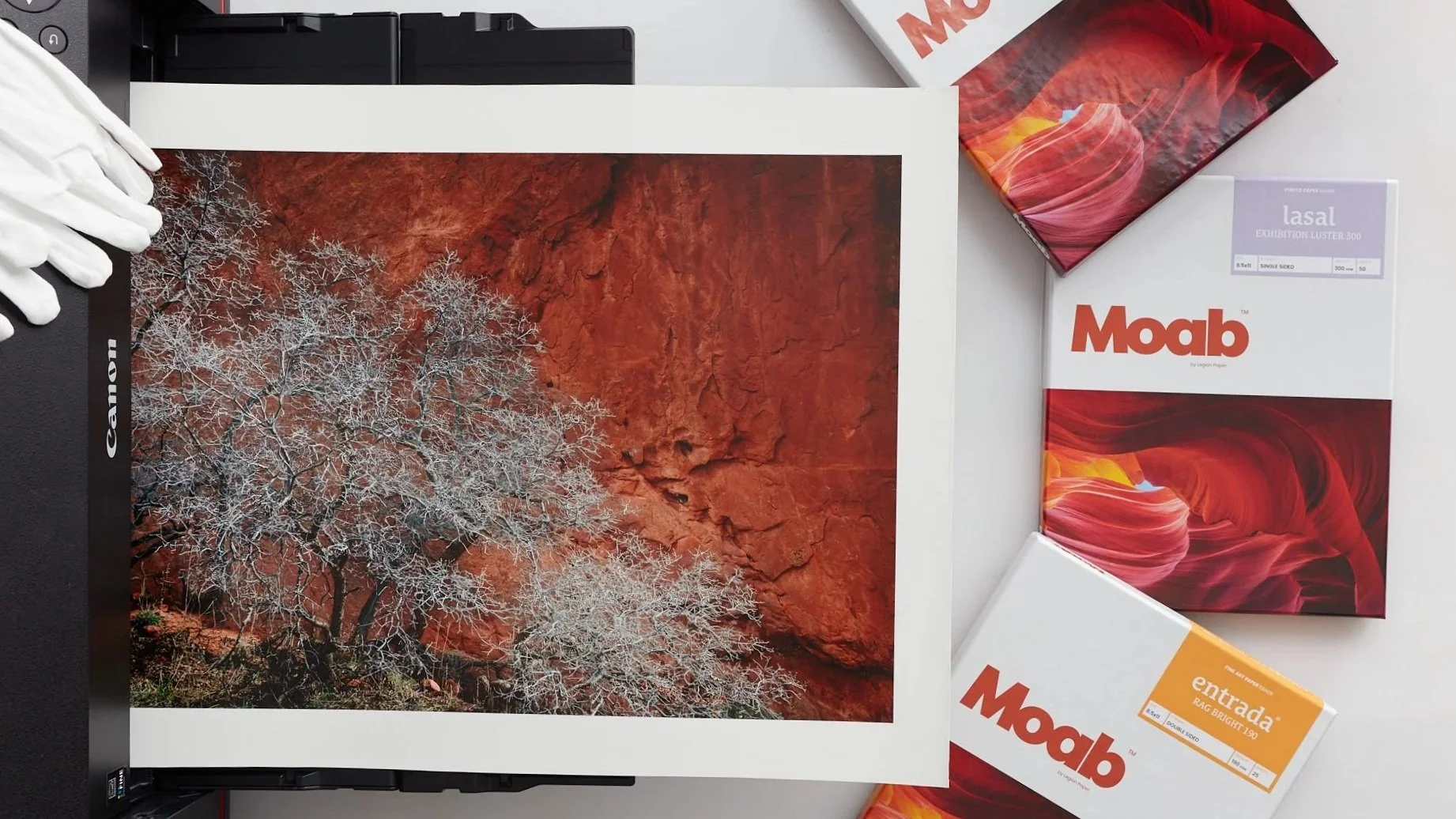Article content by Les Picker & Robert Boyer:
Putting on a gallery exhibition is both an exciting and exhausting experience. Image selection, post-processing, printing, matting, framing, and packing your framed prints are each mentally challenging tasks that require inordinate amounts of time and energy.
I'm often surprised at a huge marketing opportunity that photographic artists pass up that would enhance both sales and reputation. After all, a successful gallery exhibition is not only about showcasing the prints themselves, but the opportunity to sell them and to enhance one's reputation in the highly competitive world of art prints.
And, for most of of us who do our own printing, the opportunity is right in our hands!
The Catalog
A good art exhibition should have a catalog of the images being presented. The catalog might include the name of the piece, its price and perhaps a brief description of the image, often accompanied by the image itself.
Catalogs come in many shapes, sizes and formats. In many cases the catalog provides utilitarian value, an inventory of the art work to be primarily used by the gallery for reference. I see these catalogs as of limited value. Their limited accessibility minimizes their effectiveness. While it's certainly fulfills a necessary requirement, it does not take advantage of an immense marketing opportunity for the artist. Catalogs should use design and materials that reflect the feel and intent of the art they represent. They should also be widely distributed and worthy as a keepsake unto themselves. The goal of these ancillary materials, after all, should be to elevate the art pieces as a whole.
How We Do It
For my latest exhibition, WildEarth: Monochrome, all our large format images were printed on Moab Entrada Natural, Moab Entrada Bright, and Moab Textured Rag, using Canon large format printers. In the interests of full disclosure, we are sponsored by Moab, but that mutual decision was based on our experience and love of their papers. As a senior photographer, and as my clients and students know, I am at a point where I would never agree to be sponsored by a product I did not believe in.
Our Catalog
For the WildEarth exhibit, we wanted to integrate the luscious papers themselves into the art experience for the patrons. We designed and printed the catalogs on Moab Entrada Bright 300GSM 13" x 19" sheets. We then scored the paper in the middle, creating a perfect fold. All it takes is a very light score with a brand new blade to achieve the crisp fold we sought.
Invitations To The Opening
Similarly, we created accessory marketing materials that were both consistent with our artwork and integrated with the theme. These consisted of a small announcement/invitation and a set of four gallery cards.
The invitations were printed 4-up on an 8.5" x 11" sheet of Entrada Natural 300GSM paper, utilizing both sides and then cut. For variety, we printed them with a dark and a light background. These were mailed to a select list of clients six weeks prior tot he Opening and were also placed in strategic locations in the gallery and other venues.
Gallery Cards
The gallery cards were actual copies of two of the wildlife images and two of the landscape images that were on display in the show. They were also printed on Entrada Natural 8.5" x 11" 300GSM paper, two to a sheet and then cut. The reverse side contained marketing material about Les Picker Fine Art Photography.
It would be hard to describe the positive reaction we received at the Opening for the supporting materials (and thankfully for the fine art prints themselves!). There were literally dozens of people who commented on the feel and texture of the Moab Entrada paper and in at least two of the cases, that tactile sensation helped sell prints.
Having supporting marketing materials that elevate the artwork and are consistent with their mood and feel are what museums and significant galleries do as a matter of course. As a small studio ourselves, we completely understand that most photographers do not have a dedicated person or team to do this. But that does not mean it should not be done. We look at the production of the artwork itself as just one step toward a successful gallery show. Yes, this is a difficult and laborious task, but the end result is both satisfying and, hopefully, financially rewarding.
So, next time you are contemplating an exhibit of your artwork, think in terms of integrating the art with the marketing materials.







